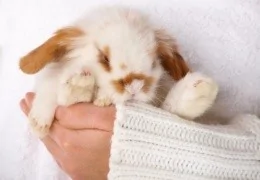The Tornjak originated from genetically homogeneous, almost extinct, indigenous shepherd dogs. These dogs have...
TIPOS DE PELAJE EN LAS RATAS DOMÉSTICAS
INTRODUCTION
Fancy rats are one of the domestic (and pet) species with the highest number of coat types, being able to have not only one type of coat, but also two at the same time, as a consequence of the union of two different but compatible genes. Knowing what type of coat our rat belongs to, as well as knowing its characteristics, will not only give us the opportunity to know more about it but, in the case of wanting to breed and specialise in one type or another, it will help us enormously in the selection of the correct specimens and genes; as well as relieving us in the case that, for example, from one day to the next our rat presents bald patches and it is only a question of moulting according to its variety.
TYPES OF COATS IN DOMESTIC RATS
STANDARD: The "standard" coat is short, uniform, smooth and shiny. Males have a slightly longer and thicker coat than females.
REX: The coat (and whiskers) of the "rex" rat is shorter than usual, curly, even, dense and not too harsh to the touch. The texture is soft as a baby and changes as it moults into the adult coat.
DOUBLE REX: As in the "rex" rats the coat is very short, curly and not very rough to the touch. They are the same until 4 weeks of age, when the D.Rex begins to lose its hair, this loss is completed in 36 days. It occurs more in bitches than in males.
VELVETEEN: Velveteen rats have wavy hair, with little curl and soft to the touch, much denser and more uniform than rex.
DOUBLE VELVETEEN: The "double velveteen" coat is very dense and soft, without alopecia, and has almost no covering hairs. It is the opposite of the "double rex".
TEDDY: Curly, soft and very fluffy, the "teddy" coat is a combination of the "rex" and the "velveteen"; its whiskers are neither as straight as in the "rex" nor as curved as in the "velveteen".
BRISTLE: Hard and rough, like wire; their whiskers are straight with curled tips and, although their hair is slightly wavy when young, it is "wild" and rustic in appearance when adult.
SATIN 1: "Satin 1" rats have semi-long, glossy fur, which is produced because the tips of the guard hairs are hollow and reflect light. Their whiskers are curved backwards.
SATIN 2 (LUSTROUS): This coat has a "greasy" and "unkempt" appearance, very glossy and soft. The white or light colours have a "yellow" tinge due to the grease at the root.
SILVERMANE (D'ARGENT): It is presented in "chocolate", "black", "mink" and "Russian blue"; the base must be of a solid colour and the tips of the coat are all silver, giving it a "very silvery" appearance. The texture is very silky.
HARLEY: This type of coat is not recommended as (apparently) most lines have health problems. The "harley" coat is sparse and fine, with a tendency to shed easily.
HARLEY VELVETEEN: The "harley velveteen" variety is the most popular with breeders and therefore the rarest. It mixes the best of both varieties (curl and length) and is healthier.
ANGORA: This type of rat is one of the rarest and, at present, there seems to be only one breeder working with them. They are very similar to the "harley" but hairier and more pompous.
TRUE PATCHWORK: Although they look the same as hairless or double rex, true patchwork rats are not the same genetically. Patchwork is a recessive gene and the rat never goes completely bald, they change their coat quickly (even every two or three days) and no moult ever leaves the same patches as the previous one. They are unique rats!
Leave a comment
Log in to post comments
















